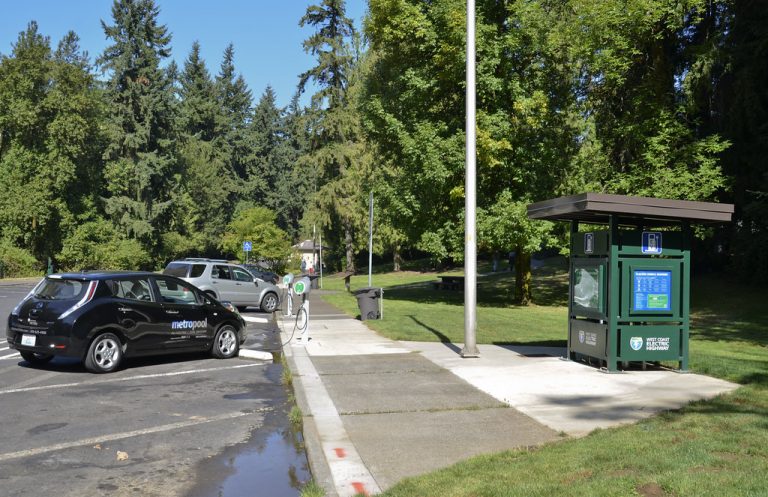Published on August 11, 2022

In just the past few years, the number of electric vehicles registered in the state more than tripled as new EV options became available, according to state licensing data. This year so far, one out of every 10 vehicles sold is an EV. Today about 100,000 EVs roam Washington highways and streets, though they still make up a very small proportion of vehicles on the road.
Outside the Puget Sound area, a classic chicken-versus-egg conundrum still plagues the rural EV market — without ubiquitous charging stations, “range anxiety” over getting stranded far from a charger continues to discourage rural adoption. And without more EVs on the road, building new charging sites isn’t profitable for the private market.
While moving to EVs will not reduce traffic congestion or eliminate greenhouse gas emissions from the transportation sector, it is one of only two plausible pathways to a deep decarbonization of road transportation, said Don MacKenzie, Associate Professor of Civil & Environmental Engineering at the University of Washington and director of the university’s Sustainable Transportation Lab.
“Notwithstanding the one issue of range and recharging time, in terms of how they drive, how they accelerate, how much they carry, their comfort,” MacKenzie said, “[EVs] meet or I would even say greatly surpass conventional vehicles and their capabilities. So it’s a really exciting time from a product standpoint.”
“The one way we could screw this up,” he said, “is if the infrastructure isn’t there.”
Continue reading at Crosscut.
Originally written by Lizz Giordano for Crosscut.